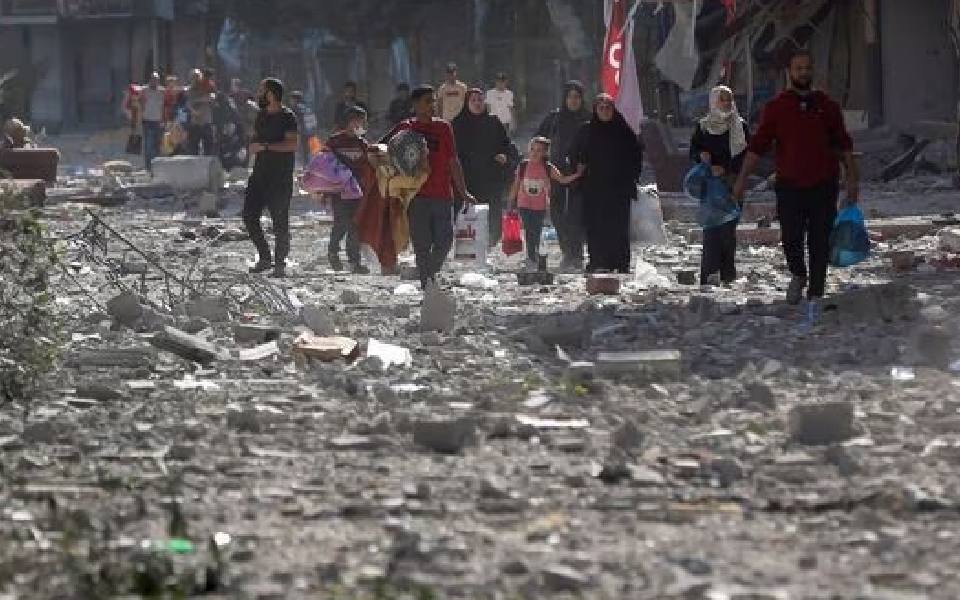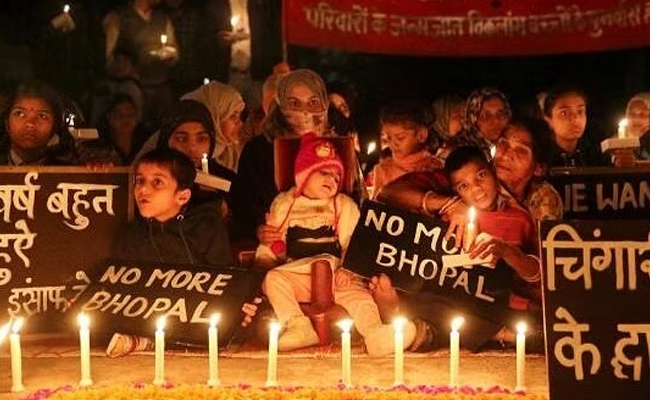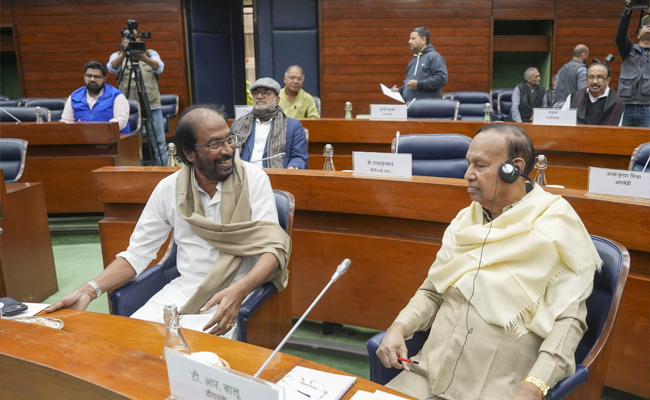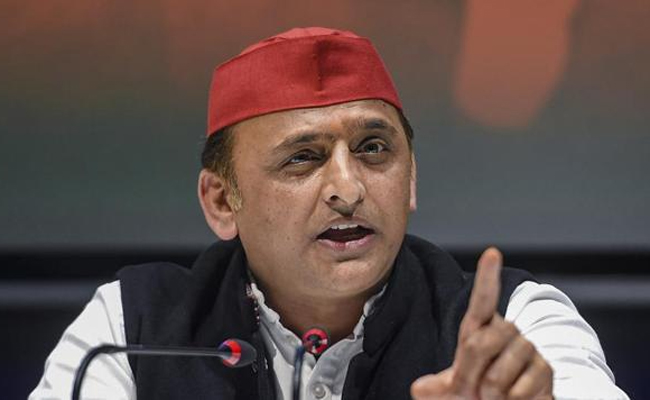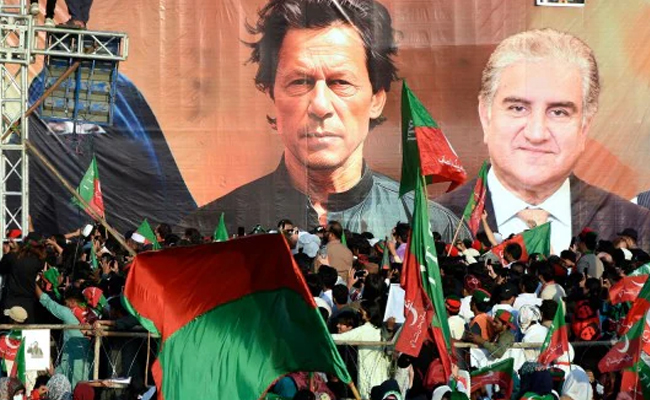Deir al-Balah (Gaza Strip), Aug 15: More than 40,000 Palestinians have been killed in the Israel-Hamas war in Gaza, the territory's Health Ministry said Thursday.
Israel's offensive has also wounded 92,401 people and displaced over 85% of the population from their homes, the ministry in Hamas-run Gaza said.
The announcement came during yet another push from international mediators to broker a cease-fire in the war, now in its 11th month.
The conflict began Oct 7 after Hamas-led group attacked southern Israel, killing some 1,200 people — most of them civilians — and dragging roughly 250 hostages to Gaza.
Israel says 111 of the captives have not been released, including the bodies of 39. The hostages include 15 women and two children under the age of 5.
In Gaza, health officials have struggled to fully identify the dead as bodies stream into overwhelmed hospitals and morgues where they say the count is compiled amid the chaos of war and displacement.
In its most recent detailed report on the dead, issued Thursday, the ministry said 40,005 people have been killed. Health officials and civil defence workers say the true toll is likely thousands higher, since many bodies remain buried under the rubble of buildings destroyed in airstrikes.
Israel's air and ground offensive in Gaza has been one of the most devastating military campaigns in recent history.
The bombardment and shelling have killed entire Palestinian families. With cemeteries often unreachable, families fleeing Israeli airstrikes bury their dead wherever possible — in backyards, along roadsides and under the staircases of their homes.
Israel says it aims to eliminate Hamas. It blames Hamas for civilian deaths because the group operate in civilian areas and have built extensive tunnel networks underneath them. Israeli forces have regularly targeted mosques, schools, hospitals and cemeteries where it claims fighters or tunnels are located, often causing civilian casualties.
The fighting has also killed 329 Israeli soldiers. The Israeli military claims that over 17,000 Hamas fighters are among those killed in Gaza but has not provided evidence.
Nearly 85% of Gaza's 2.3 million people have been driven from their homes, fleeing multiple times across the territory to escape ground offensives. During the war, thousands within Israel and in southern Lebanon have also been displaced.
The assault has created a massive humanitarian crisis in Gaza. The entire territory is at high risk of famine and over 495,000 people — more than a fifth of the population — are expected to experience the most severe level of hunger in the coming months, according to the latest report by the leading authority on measuring hunger.
Also, Gaza's sanitation systems have been destroyed, leaving pools of sewage and towers of garbage in tent camps packed with displaced families.
The offensive likely either damaged or destroyed 59% of all structures in Gaza by July 3, including 70% of buildings in northern Gaza, according to an analysis of satellite data by Corey Scher and Jamon Van Den Hoek, experts in mapping damage during war.
The conflict has sparked fears of a wider regional war, with Lebanon's Hezbollah group and the Israeli military trading fire almost daily over their countries' border.
More than 500 people have been killed on the Lebanese side, including some 350 Hezbollah members and 50 fighters from other groups, with the rest being civilians. In Israel, 22 soldiers and 24 civilians have been killed.
Let the Truth be known. If you read VB and like VB, please be a VB Supporter and Help us deliver the Truth to one and all.
Bhopal (PTI): The effects of poisonous gases that leaked from the Union Carbide factory in Madhya Pradesh's Bhopal 40 years ago were seen in the next generations of those who survived the tragedy, a former government forensic doctor has said.
At least 3,787 people were killed, and more than five lakh were affected after a toxic gas leaked from the pesticide factory in the city on the intervening night of December 2 and 3, 1984.
Speaking at an event held by organisations of gas tragedy survivors on Saturday, Dr D K Satpathy, former head of the forensics department of Bhopal's Gandhi Medical College, said he performed 875 post-mortems on the first day of the disaster and witnessed 18,000 autopsies the next five years.
Sathpathy claimed Union Carbide had denied questions about the effects of poisonous gases on unborn children of women survivors and said effects would not cross the placental barrier in the womb in any condition.
He said blood samples of pregnant women who died in the tragedy were examined, and it was found that 50 per cent of poisonous substances found in the mother were also found in the child in her womb.
Children born to surviving mothers had the poisonous substances in their system, and this affected the health of the next generation, Sathpathy claimed and questioned why research on this was stopped.
Such effects will continue for generations, he said.
Satpathy said it was said that MIC gas leaked from the Union Carbide plant, and when it came in contact with water, thousands of gases were formed, and some of these caused cancer, blood pressure and liver damage.
Rachna Dhingra of Bhopal Group for Information and Action said Satpathy, who carried out most autopsies, and other first responders in the 1984 disaster, including the senior doctors in the emergency ward and persons involved in mass burials, narrated their experiences during the event.
Rashida Bee, president of the Bhopal Gas Peedit Mahila Stationery Karmchari Sangh, a poster exhibition covering every aspect of the disaster will be held till December 4 to mark the 40th anniversary of the tragedy.
An anniversary rally will be organised, with focus on global corporate crimes such as industrial pollution and climate change, she said.

